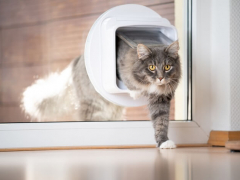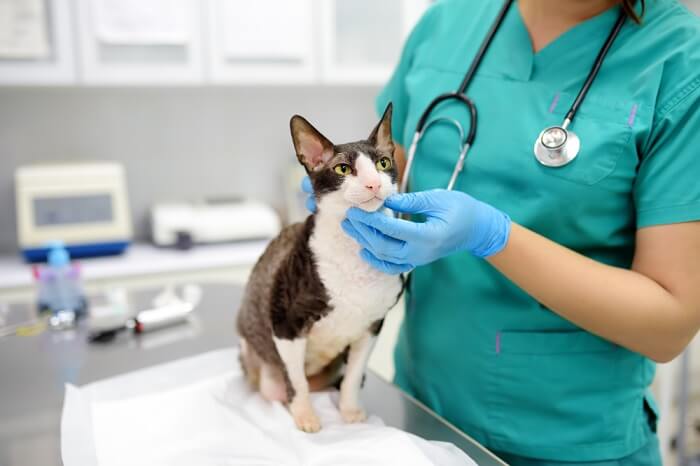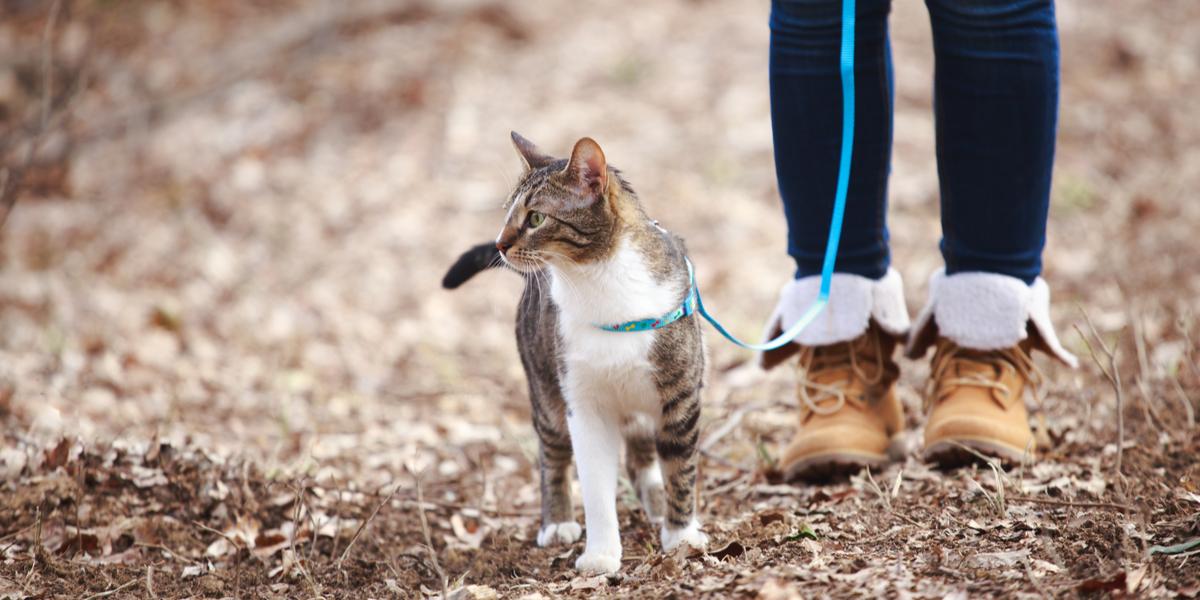
Dogs get to go for walks and explore the world. Why should cats miss out on all the fun? Keep reading to find out how to walk a cat on a leash.
Imagine the exhilaration and sensory stimulation your cat will experience while exploring the great outdoors!
With the right tips and tricks, you can train your indoor cat to walk on a leash, allowing them to safely enjoy boundless adventures.
Benefits Of Outdoor Activity
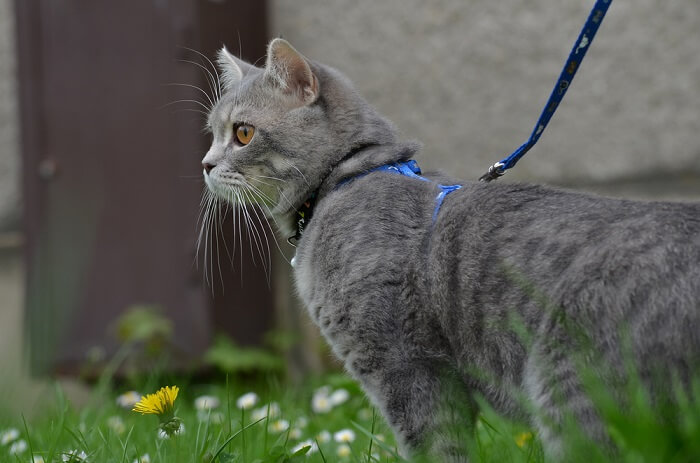
Outside activities help with physical and mental stimulation as well as offer alternative interests that can change certain behaviour.
There are many benefits to walking a cat! Outdoor activity helps to stimulate your cat mentally and physically. This mental stimulation could help to modify your cat’s behavior, improve their self-esteem, and could help to lower stress.
- Cat walks offer an obese feline opportunity to lose weight and get in shape. It’s a fun bonding activity that owner and cat can share together.
- Access to larger territory with varied ecosystems allows cats to decrease monotony due to confinement. It also gives your cat an opportunity to express natural hunting behaviour, which releases endorphins in the cat’s brain. This translates to a happier, less-stressed feline.
- Ultimately, outdoor time and training encourages cognitive learning, develops a confident cat, and improves your cat’s overall quality of life.
Things To Consider Before You Start Training Your Cat To Walk On A Leash
You can’t walk out of the house with your cat for the first time and expect them to be ready for a walk in the park. Instead, it’s important to be prepared before you start training. Here are a few things to think about before you begin.
Choosing The Right Harness And Walking Gear Is The First Step.
When a cat happily wears a harness and leash, it gives the cat greater freedom to investigate a whole new world of enrichment outdoors and relieve stress.
A safe, comfortable, and well-fitted harness is imperative to securely explore the planet. Cat harnesses are available for all size cats. They fit around your cat’s body and attach to a lead, so your cat can walk safely outdoors once fully trained. Choose a harness designated specifically for cats, since these are more secure than those designed for dogs.
Never Walk Your Cat With A Leash And Collar Alone.
Do not attach a lead to a collar as cats have sensitive throats and neck muscles, pressure from pulling can cause injury, in comparison to a harness because tension is absorbed from a cat’s shoulders and chest. Similarly, a collar can also cause a cat to choke if they break out or become tangled.
Ensure Your Cat Is Microchipped, Wears A Bell, ID Tag, And An LED Light.
These safety accessories will help to protect your cat in case they slip out of the harness by accident. Retractable leashes are not recommended for cats or dogs.
Once You’ve Gotten The Right Supplies, Consider Your Timing.
Begin indoor harness training as soon as your kitten joins the family. Start outdoor training when he or she is about 6 months of age, neutered, and fully vaccinated. Adult and older confident cats can also learn leash walking along with appropriate training methods.
How To Train A Cat To Walk On A Leash?

Once you’ve gathered your gear, the next step is training your cat to walk on a leash.
Teaching a cat to wear a harness is not challenging, however, it must be done gradually. Small delicious treats can be used as rewards during harness introduction.
Certain indoor cats may get overwhelmed or anxious when first taken outside, so cat owners need to take things slowly and quickly return home if the cat seems frightened.
Your cat’s temperament and enthusiasm play a vital part in leash training. When you start training, think about your cat’s personality and which combination of training methods will work best for them.
The primary training methods used are:
- Desensitization/counterconditioning—deconditioning subjects the cat to the scary stimuli progressively in ways that do not cause him or her to display unwanted behaviour, whereas counterconditioning provides something (i.e. treats) to help the cat associate the scary stimulus with a positive experience.
- Luring involves the use of an incentive, usually a food treat to tempt the cat into a specific position.
- Targeting refers to the process of teaching your cat to touch an object usually with their nose or a paw.
- Clicker training is a type of marker training where the trainer utilizes a click sound to mark the desired behaviour.
How To Train A Cat To Walk On A Leash: Step-By-Step?
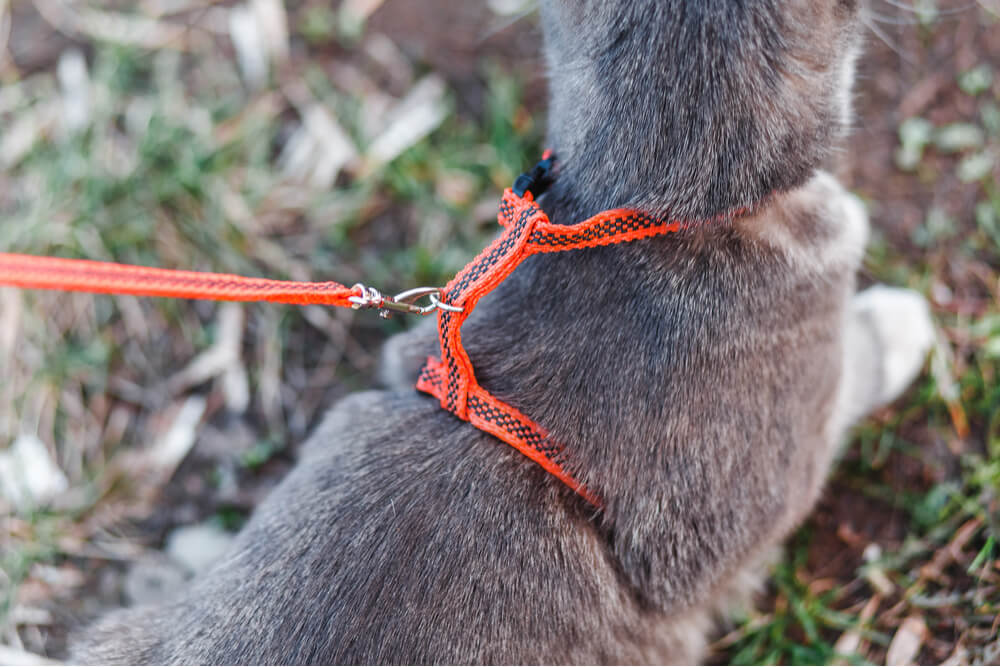
When training your cat to walk on a leash using an H-style harness, you’ll first have to get your cat accustomed to the harness. After a quick introduction, this usually involves draping the harness over your cat’s back and helping them become comfortable with it before attaching a leash.
There are multiple ways to train a cat to walk on a leash. All methods should be practiced at home ’til the cat is used to the harness.
Your training technique will differ depending on which type of harness you’ve chosen.
Primary Training Technique (H-Type Harness):

Step 1: Introduce the harness and have the cat target it with its nose, click and treat. Repeat this step several times per week till the cat is accustomed to the harness.
Step 2: Make size adjustments to the harness when it is not on the cat. It does not have to perfectly fit the first time, but it is important the cat cannot slip out of it.
Step 3: Place the harness (unattached) over the cat while he or she is devouring treats. Remove the harness when they stop eating. Replicate this step numerous times a week until they are comfortable.
Step 4: Put the harness over the cat while eating regular meals, remove when done eating. Repeat this step for several days.
Step 5: Once the cat is accepting the harness, attach it as he or she continues eating. Let them munch with the harness on then remove the harness.
Step 6: Progressively leave the harness on for lengthier periods, always supervised.
Step 7: Adjust the harness to fit your cat’s body. Ensure you can fit 2 fingers between the harness and cat’s frame.
Step 8: When the cat is comfortable wearing the harness, attach the leash and let him or her drag it supervised around the house. Ensure it does not get caught on anything. If dragging it unsettles them, hold the leash and follow around occasionally by clicking and treating. Keep this routine for a period of days.
Step 9: Once your cat is confidently leash walking at home, proceed outside to a safe, quiet environment such as your garden or courtyard.
Step 10: First time, sit beside your cat whilst they listen to the sounds of birds, cars, people and become used to the sights and sounds of the open-air environment.
Step 11: Allow your cat to investigate the surroundings as you hold the leash. Repeat for several days and increase time-length.
Step 12: The first few outdoor walks should be no more than 5 – 15 minutes depending on your cat’s reactivity.
Step 13: Once your cat is confident, venture out for a short walk outside your garden during quiet periods. Watch for your cat’s body language and signs of stress at all times. Beware of dogs, other cats, and traffic, be prepared to pick up your cat, as necessary. As a safeguard, carry a collapsible carrier or backpack.
Alternative Training Technique (Escape Proof Harness):

When using an escape-proof or jacket-style harness, your training approach will be slightly different.
Use this method by teaching your cat to put his head through the harness.
Step 1: Start by having your cat target the harness, click, and treat to build a positive association.
Step 2: Hold open the harness in front of the cat, put your other hand slightly through the opening of the harness while holding a treat, wait for your cat to take the delicacy. Repeat for few days.
Step 3: Hold the treat inside the harness opening so your cat’s nose is barely inside the loop to get the treat. Recap for several days.
Step 4: Hold the treat further towards you so the cat must place his full head through the harness opening to get the treat. Repeat several times.
Step 5: Once he or she is comfortable, put the rest of the harness on the neck/shoulders.
Step 6: Try to remove the harness just before they done eating so the cat does not have the opportunity to back out.
Step 7: When your cat is comfortable, provide him or her with a small bowl of food as a reward for putting the head through the harness. While chewing, attach the harness, take if off before it finished eating.
Step 8: Work on keeping the harness for longer periods (always supervised) while the cat is eating or playing so they barely notice wearing it.
Step 9: When your cat is relaxed wearing the harness, attach the leash, and follow the steps depicted above.
NEVER leave your cat unattended outdoors on a harness and leash!
Tips To Make Training Easier

The following tips will help you to train your cat to walk on a leash as easily as possible.
- Teach your kitten or cat to accept and enjoy the handling of various body parts prior to leash training.
- Be prepared with all the materials you need, such as harness, leash, treats, a treat bag, and props before you start teaching.
- If your cat is bothered by the leash, try attaching a short string or shoelace instead, when he or she are comfortable, replace with a leash.
- Sessions should be short ranging from 2 – 5 minutes. Coaching length will depend on the cat’s temperament and reactivity. We recommend once a day, at least three times a week.
- We suggest training your cat few cues like sit, stay and recall prior to leash training.
- Use tiny high value treats such as cheese, chicken, meat baby food, small pieces of tuna or your cat’s favourite treat.
- Not all outdoor environments are suitable (i.e. busy traffic areas, dogs off-leash parks). Start walks in a quiet calm environment free of traffic, noise, other pets, and distractions.
- Watch for signs of stress, such as ears back, dilated pupils, crouching, tail twitching and not accepting treats.
- Do not rush the training session; better to go slow than cause a negative reaction to the cat.
- Gradually increase the length of each session and end each one on a happy note.
- Patience, consistency, and a sense of humour are key to a fun training session!
Conclusion
Allowing indoor cats supervised outdoor time is the most enriching thing pet parents can do for their cats. Outdoor exposure has been proven to help countless cats with behavioural issues and is key to your cat’s positive physical and mental health.
Enjoy your first FREE Virtual training session courtesy of Pet Nurture.
Frequently Asked Questions
Can cats be taught to walk on a leash?
Wearing a harness and being confined on a leash does not come spontaneously to cats, vigilant training is needed for a cat to fully accept it. Well socialised, relaxed, and outgoing cats will love going for walks like dogs. Anxious, skittish, or shy cats are not suitable contenders, forcing them to walk on a leash can exacerbate their state of anxiety. Some cats may freeze or flop to the ground the first few training sessions, do not get discouraged, persevere for few days until your cat is used to the harness. Allocate lots of time and patience while keeping plenty of treats on offer. Be prepared to stop training if your cat exhibits signs of stress. If your cat is an adventurous spirit but distressed from leash walks, initially try a walk in a pet carrier/stroller. Some cats will never accept wearing a harness and leash; therefore, it is not advocated for every cat.
What cat breeds will walk on a leash?
All cat breeds can be taught to walk on a leash.
Certain breeds may be simpler to train and walk than others. Ragdolls love to please their owners and follow them around, Abyssinians enjoy being out meeting people, Bengals are extremely intelligent and highly energetic, Maine Coons are curious, easily trainable, Ocicats and Savannah cats are super energetic and need a large amount of exercise. (too many to list).
Is it weird to walk a cat on a leash?
Enriched environments are key to a low-stress life for indoor cats. If your indoor cat experiences frustration, depression or boredom a leash walk in the garden or a safe place will allow an adult cat to get fresh air, forage, climb, exercise and express natural hunting behaviour.
-
Academy, K. P. (2016). Why Train a Cat. USA. Retrieved September 09, 2020
-
Care, I. C. (2019, February). Cat friendly gardens. (I. C. Care, Compiler) UK. Retrieved May 28, 2020
-
Kolus, C. (2016). Training Protocols. USA: Clicker Learning Institute for cats and kittens. Retrieved September 06, 2020
-
NSW, C. P. (2018). Harness and lead training. (C. P. Society, Compiler) Newtown, Sydney, NSW, Australia. Retrieved September 05, 2020
-
Weil, K. (2019, February 07). Hunting Enrichment Part 2: The great outdoors. Retrieved September 10, 2020, from IAABC: https://winter2019.iaabcjournal.org/hunting-enrichment-part-2/
